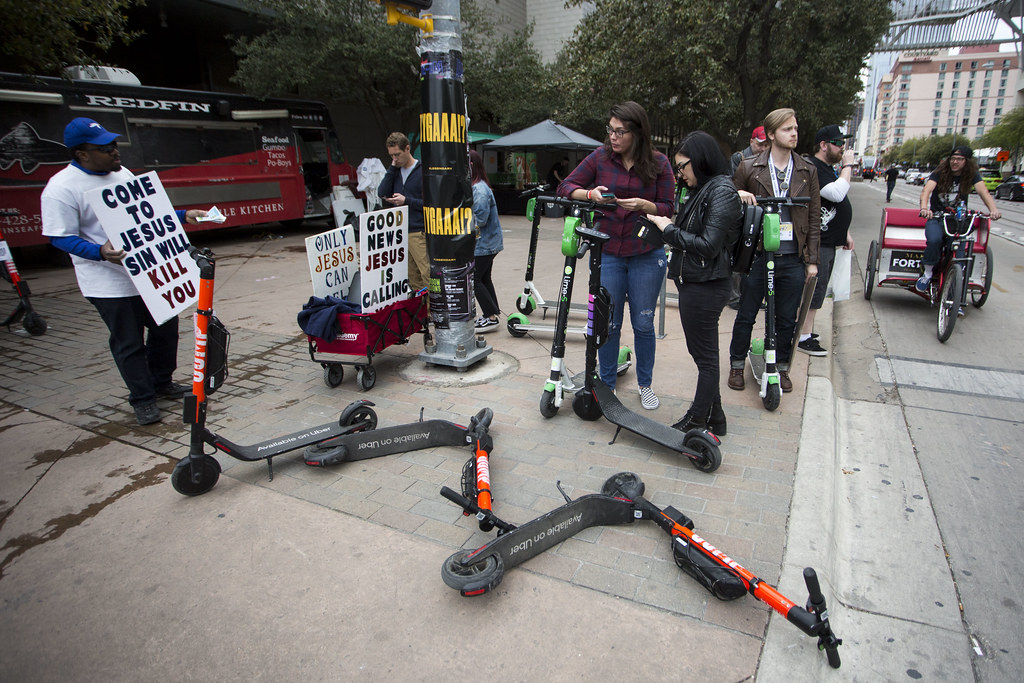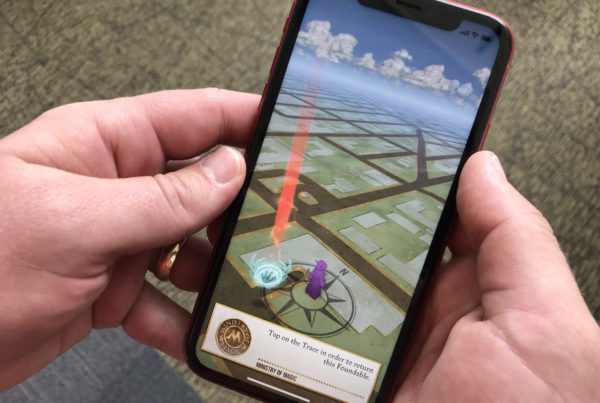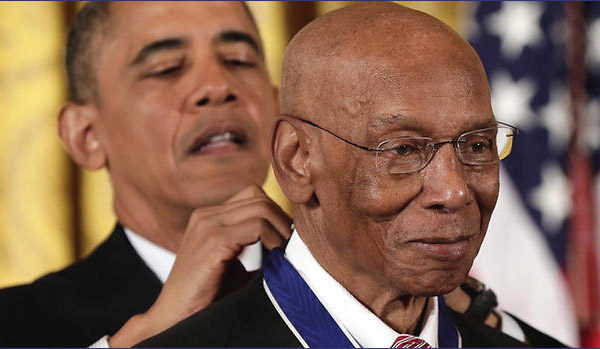If they’re in your city, you’ve certainly seen them. And you’ve probably formed an opinion about electric scooters – personal transportation devices that are ubiquitous in most urban Texas areas (except Houston, which has continued to prohibit them).
Many, mainly younger people, have flocked to the fleet of scooters from companies like Bird, Uber and Lime. Scooter boosters say the vehicles – easily available, unlockable via apps and priced by the minute – are an inexpensive and eco-friendly way to get around a city’s urban core.
Their detractors point to an uptick in visits to hospital emergency rooms by riders and innocent bystanders, plus the obstruction of sidewalks, which is an especially tough issue for people with disabilities, to say little of the clutter along college drags from Austin to downtown Dallas to beachside Corpus Christi.
Texas Standard’s Joy Diaz spoke with three public radio reporters who cover transportation.
In San Antonio, scooters are no longer allowed on city sidewalks. Paul Flahive, technology and entrepreneurship reporter for Texas Public Radio in San Antonio, says that even with sidewalks cleared of riders, scooter parking is a big issue.
“The biggest con for pedestrians is that it block pedestrian right-of-ways,” Flahive says.
KUT Austin digital reporter Andrew Weber agrees. He says the city of Austin has created parking areas for scooters, but that they haven’t been utilized as much as city leaders would like.
“There are 15,000 of these scooters in Austin, so it’s the most visible complaint that they’re parked sort of haphazardly, and that they’re a hazard to folks who may be using a wheelchair,” Weber says.
Gail Delaughter, transportation reporter for Houston Public Media, says scooter company, Lime, tried to convince the city to allow scooters in Houston by pointing to its own data showing that 40% of scooter rides replaced a car trip.
“In a car culture here in Houston, people are tempted to jump in the car for a trip of any amount,” Delaughter says. “Maybe it’s a hot day, it’s very steamy outside, you’ve got to go one-third of a mile down the road … you’re just going to jump in the car and do it because it’s more convenient.”
Weber says scooters first came to Austin in April 2018. Since then, some 4.5 million scooter rides have been taken in the city.
“The city didn’t really have rules that were codified until May [of this year],” Weber says. “And those rules just went into effect this week.”
Weber says reports of large numbers of scooter injuries led the Centers for Disease Control and Prevention to study the scooter phenomenon in Austin. Of the 200 injuries reported in a three-month period, only one scooter rider was wearing a helmet.
“The city is not requiring folks to wear a helmet unless you’re under the age of 18,” Weber says. “You can’t double up on a single scooter, and you can ride on a sidewalk in Austin, but it’s kind of encouraged not to, if you can.”
Delaughter says Houston is using scooter data from other cities to inform its rules.
In San Antonio, advocates of pedestrian travel are pro-scooter. They say scooters are comparable to bikes in terms of their impact on cities.
Weber says many in Austin say that scooters are different from bikes because they don’t have dedicated travel lanes, as bikes do in some parts of the city.
Delaughter says conflicts among drivers, cyclists, scooter users and pedestrians often devolve into disputes over “who owns the streets.”
“That whole idea of sharing the streets safely, and not just as an avenue of travel for people in cars, but other road users as well,” Delaughter says.
Flahive says San Antonio has taken a cautious approach to regulating the way users of all transportation modes share the road.
“I think that there’s a lot of questions around the benefits of scooters that still are out there,” Flahive says. “Even when we say that it’s an energy-saving or a more carbon-neutral way of travel … we don’t know how long these things last. There’s a lot of questions about the lifecycle of these things on the streets.”
Delaughter says scooter rules in Houston are in an early stage. The city will begin engaging with stakeholders later this summer. She says Houston is focusing on where scooters are left when the ride is complete.
Written by Shelly Brisbin















